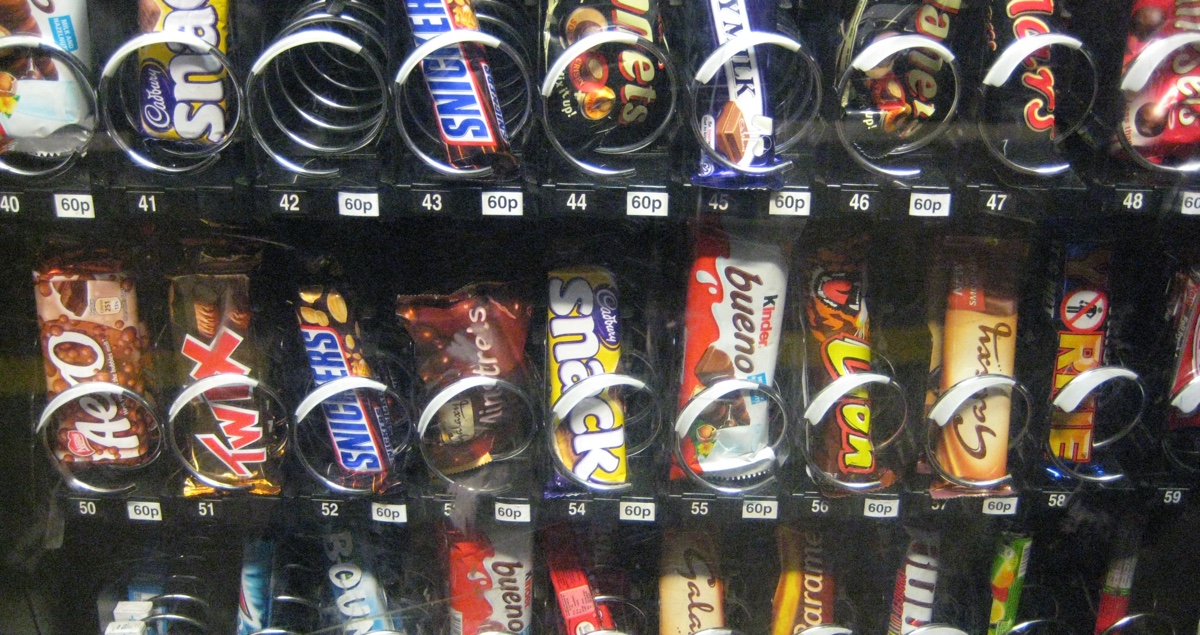More Than Half of Your Calories Come from Junk Food, Study Says

Vending machine photo by Phil Whitehouse via Flickr/Creative Commons
Many a nutritionist and celebrity has cited the 80/20 rule—80 percent healthy choices, 20 percent cheat foods—as the gold-standard of healthy eating. But a new study from Tufts and University of São Paolo researchers says for many people, that ratio is actually a lot closer to 40/60.
For the approximately 9,300 people evaluated by the study’s survey, 57.9 percent of caloric intake, on average, came from “ultra-processed foods,” like frozen meals, candy, soda, and mass-produced cookies and crackers. Those foods were also responsible for roughly 90 percent of subjects’ added sugars intake.
Ultra-processed foods, according to the study, are “industrial formulations which, besides salt, sugar, oils and fats, include substances not used in culinary preparations, in particular additives used to imitate sensorial qualities of minimally processed foods and their culinary preparations.” In other words, they’re total junk food.
Regular old processed foods, like bread and cheese, accounted for just less than 10 percent of participants’ calorie intakes; unprocessed or minimally processed foods, like fresh produce and meat, made up about 30 percent; and processed culinary ingredients, like salt and oils, rounded out the final 3 percent.
Not shockingly, the higher the percentage of ultra-processed foods in an individual’s diet, the more likely he or she was to exceed recommendations for added sugar consumption. (Current literature suggests limiting them to 10 percent of daily calorie intake.) Since excess sugars are linked to obesity, type 2 diabetes, heart disease, and more, that’s a big problem.
So next time you mindlessly reach for a soda or candy bar to power through the 3 p.m. slump, think of it this way: Scientists technically consider your snack a “formulation,” not a food. Maybe pack an apple instead.


